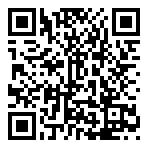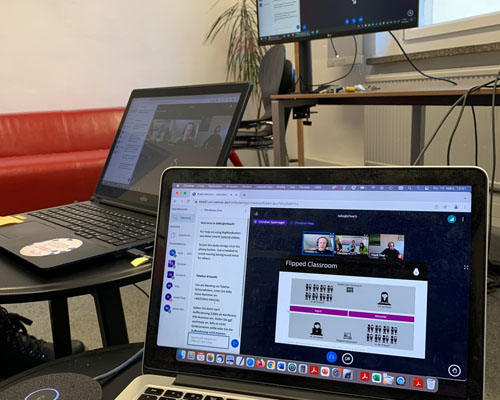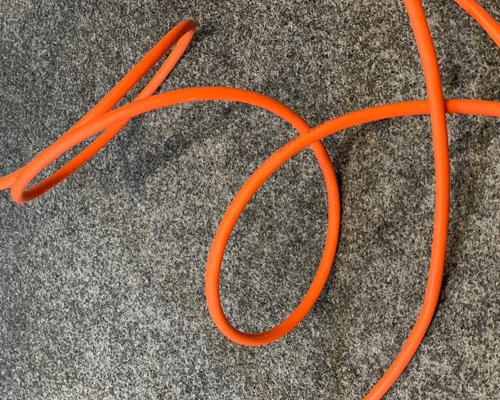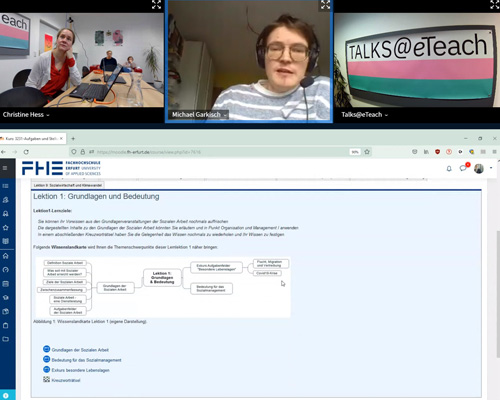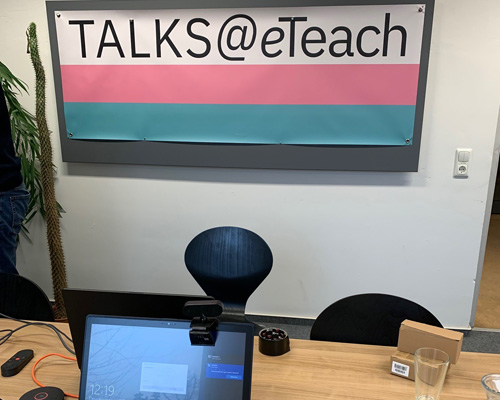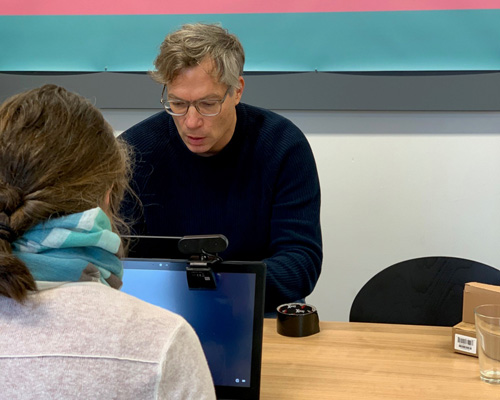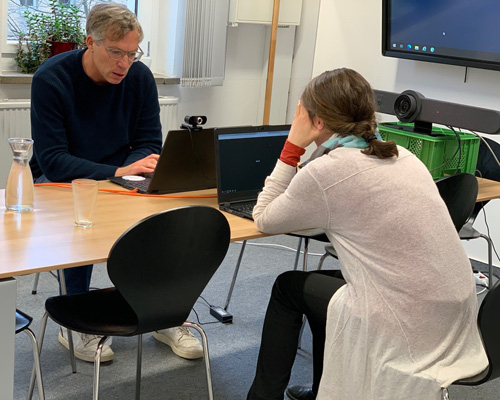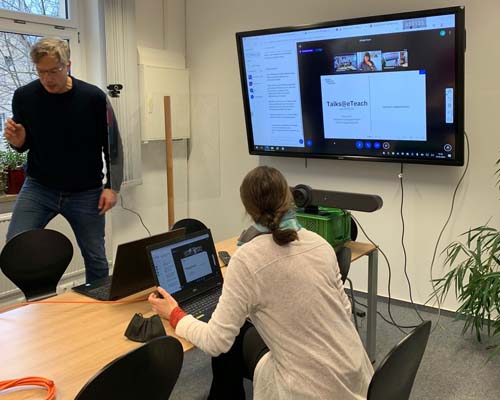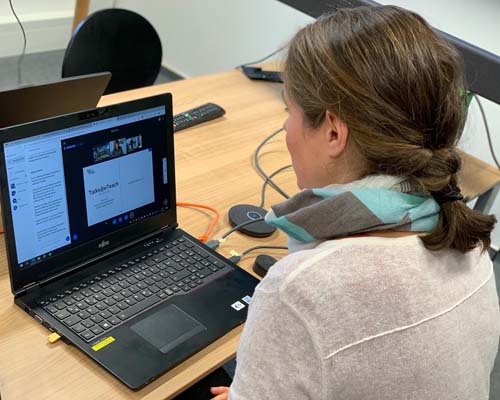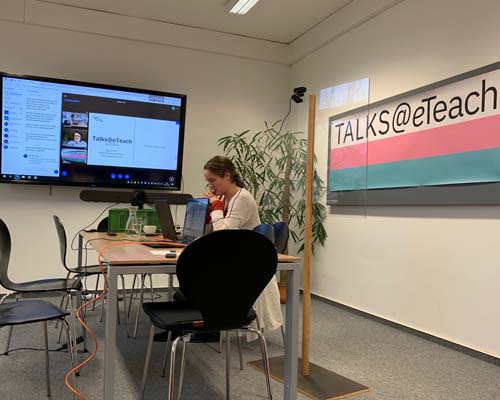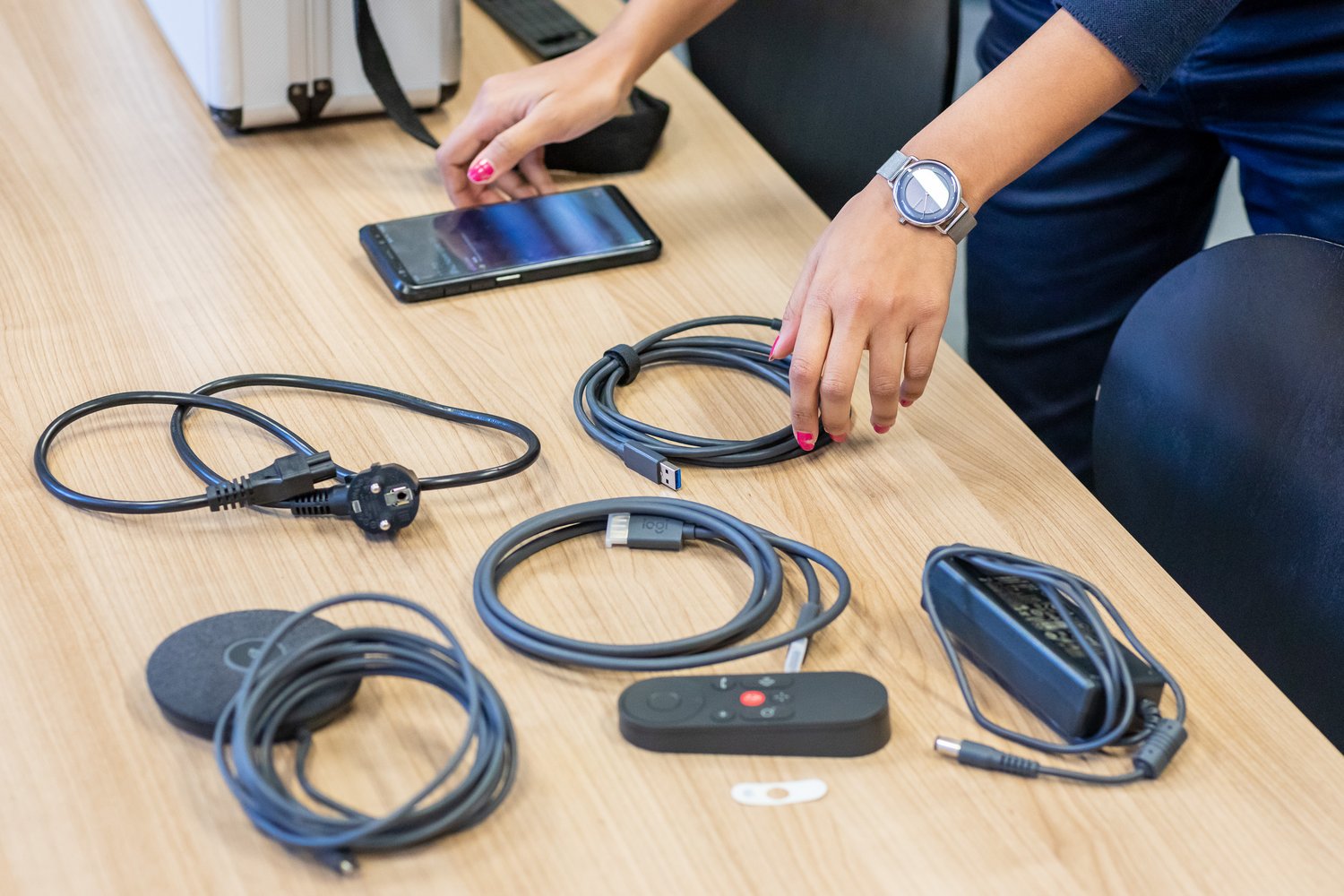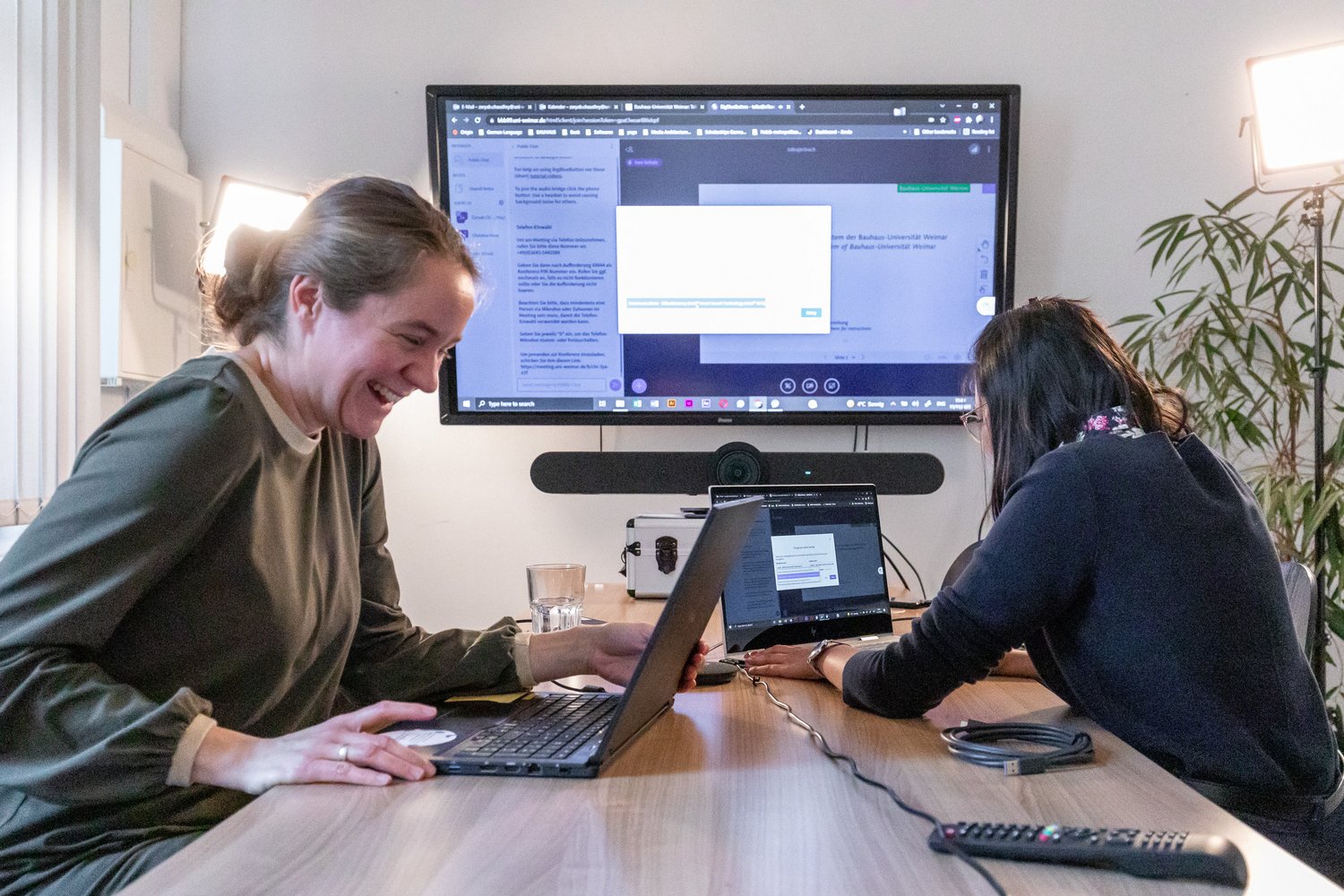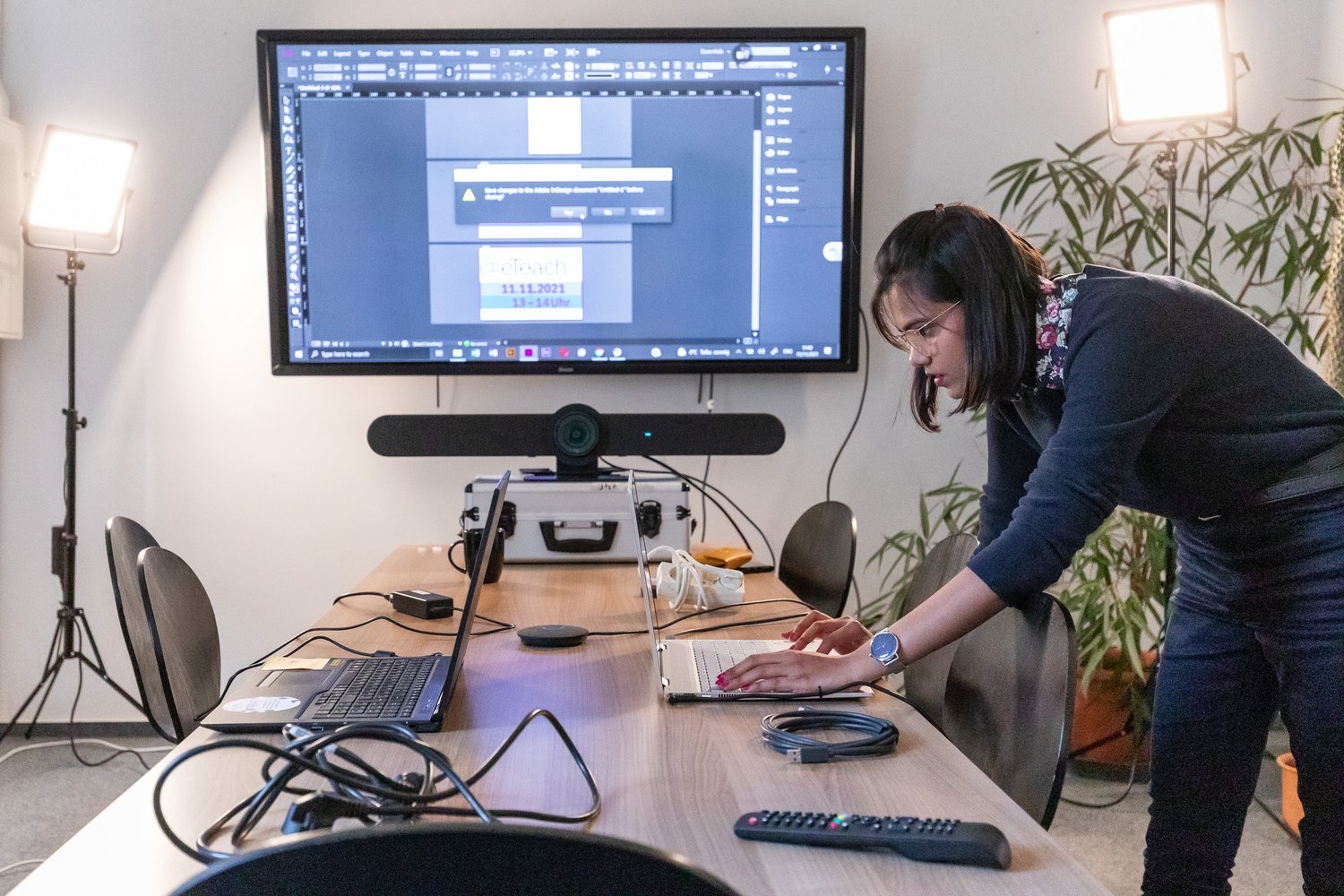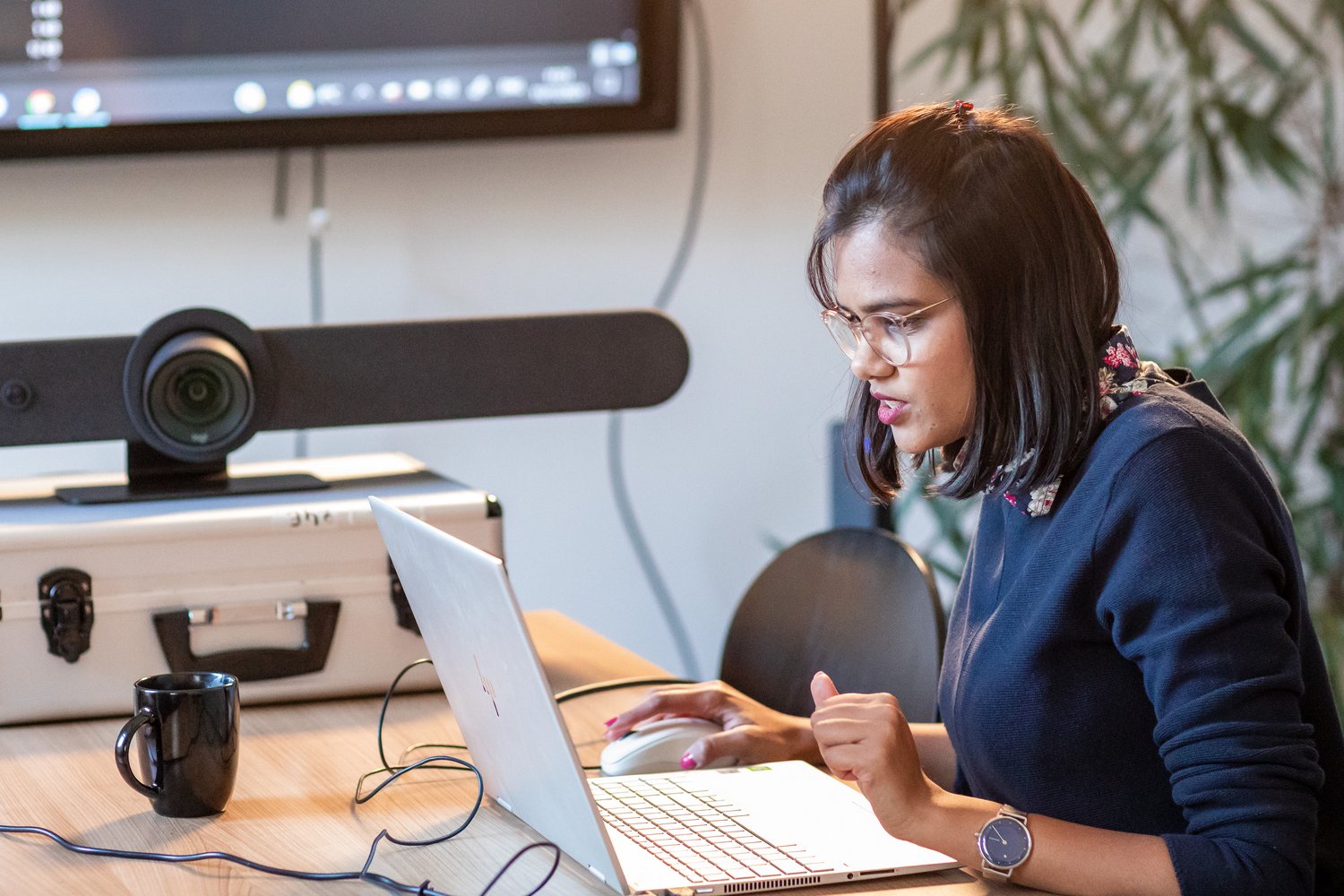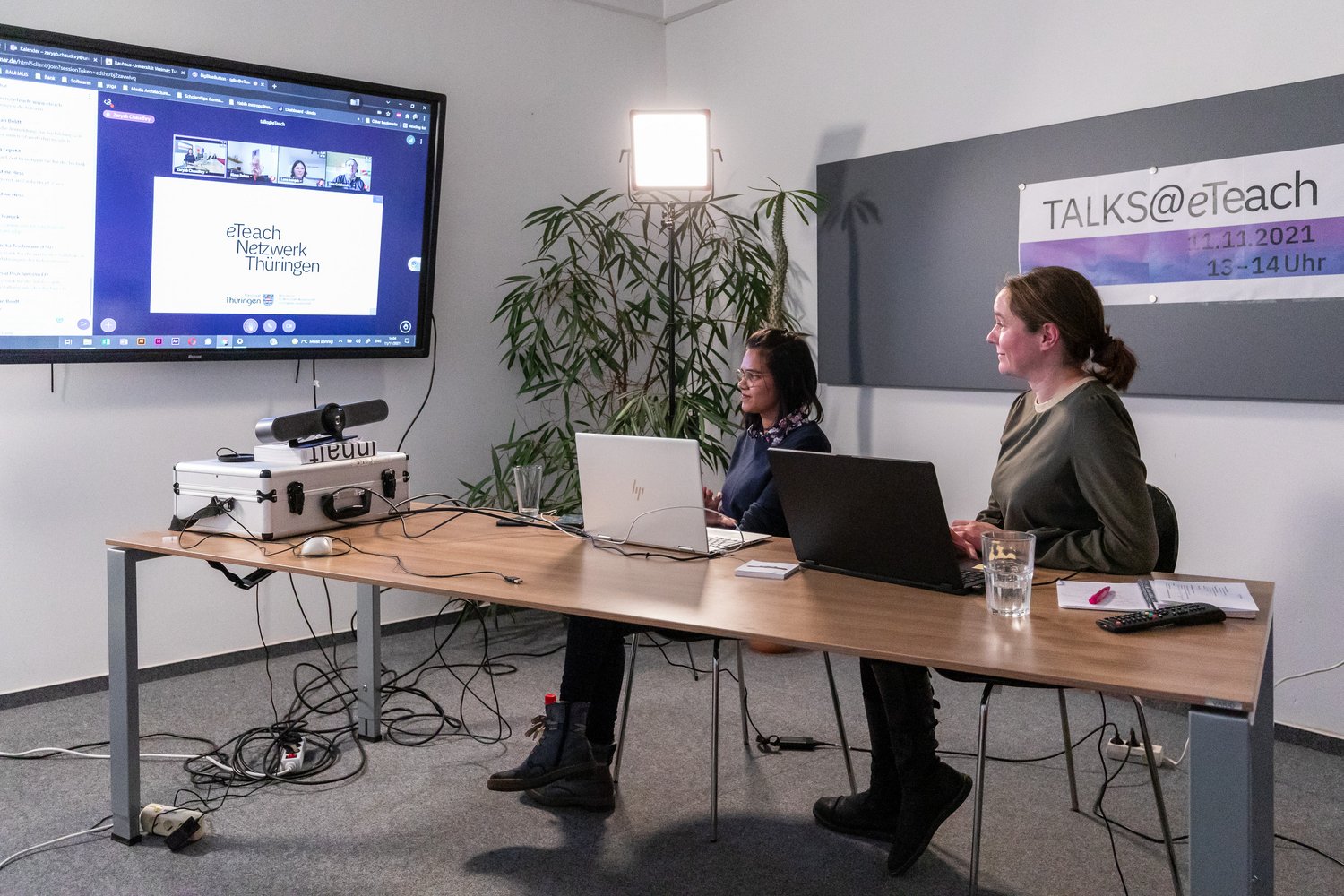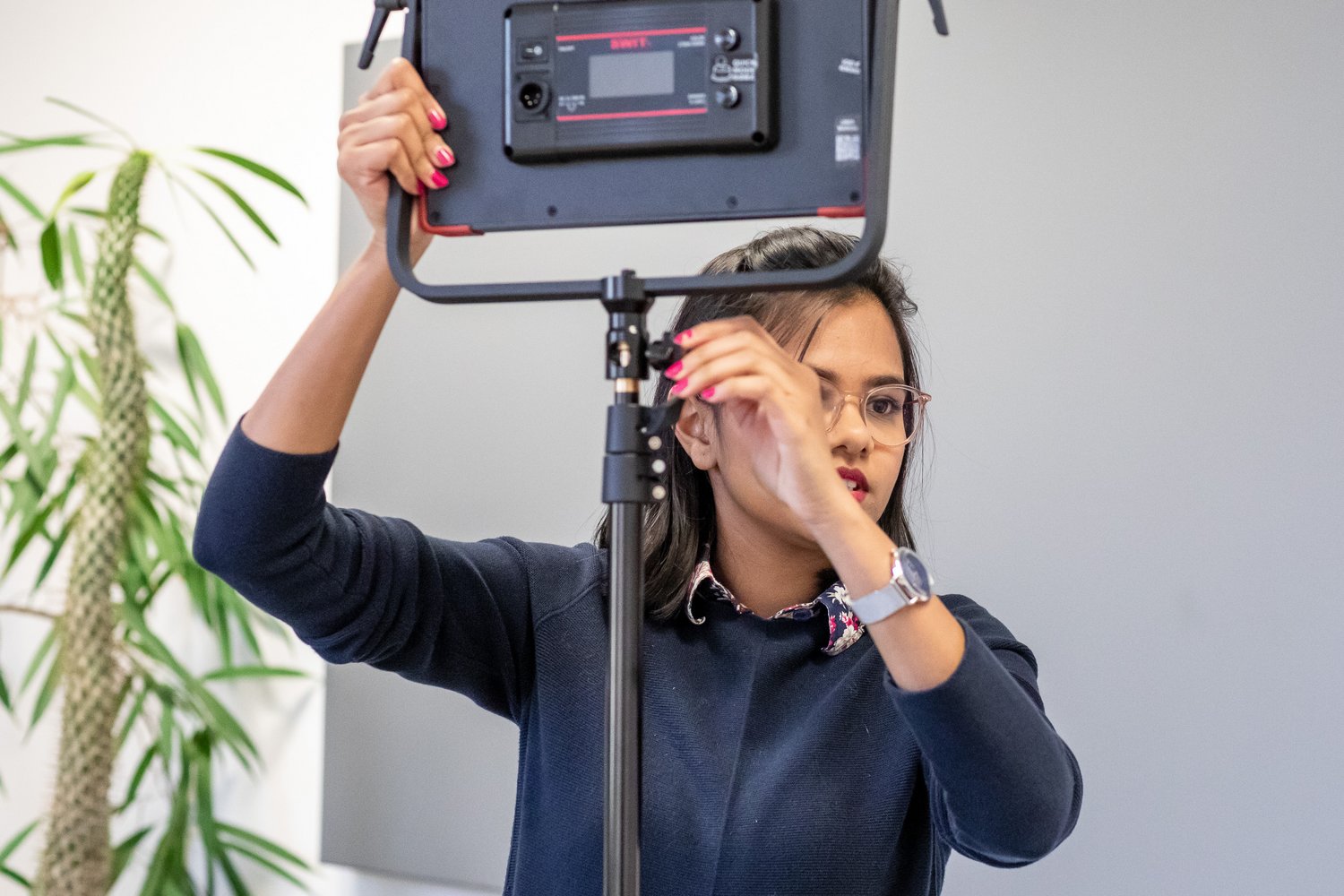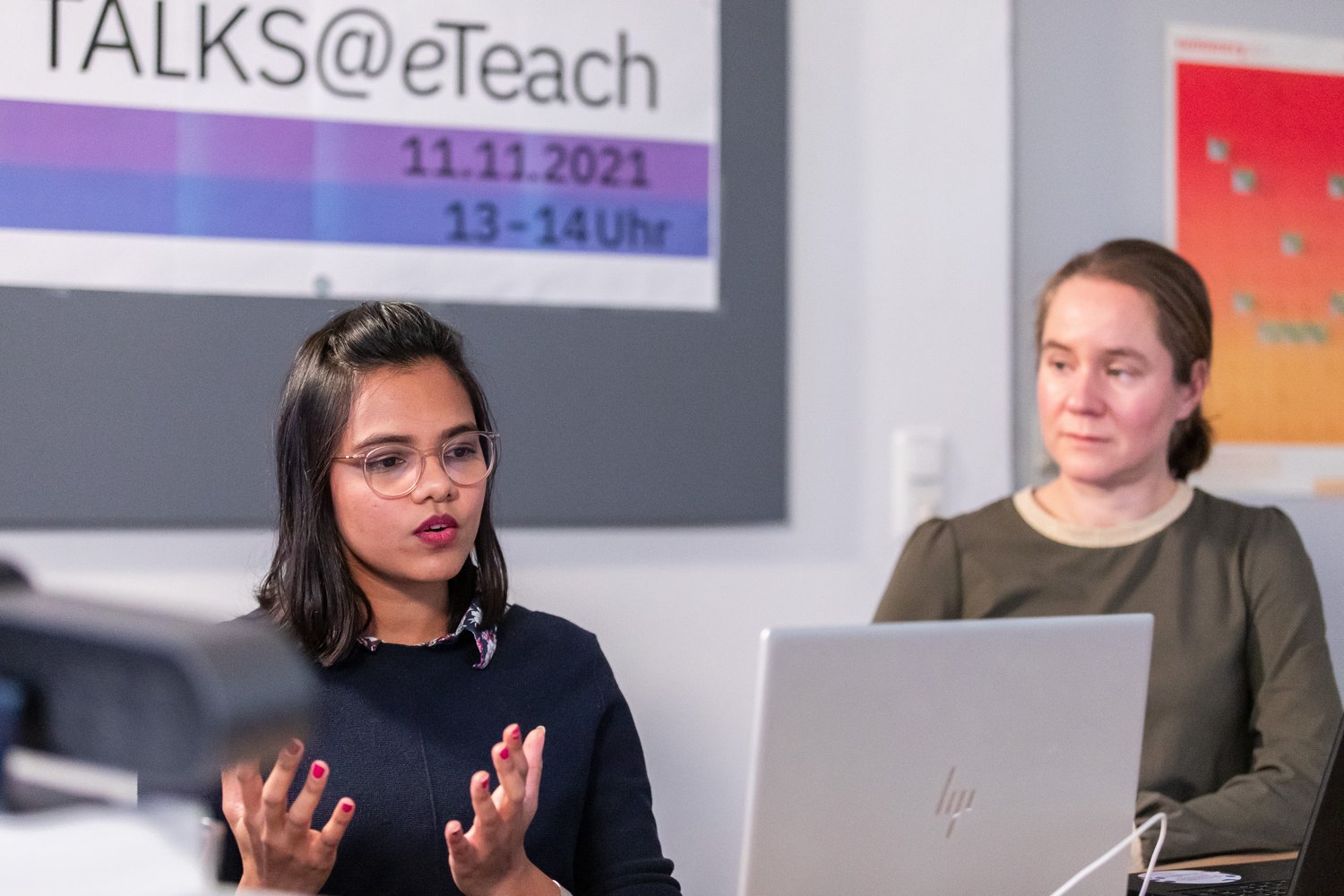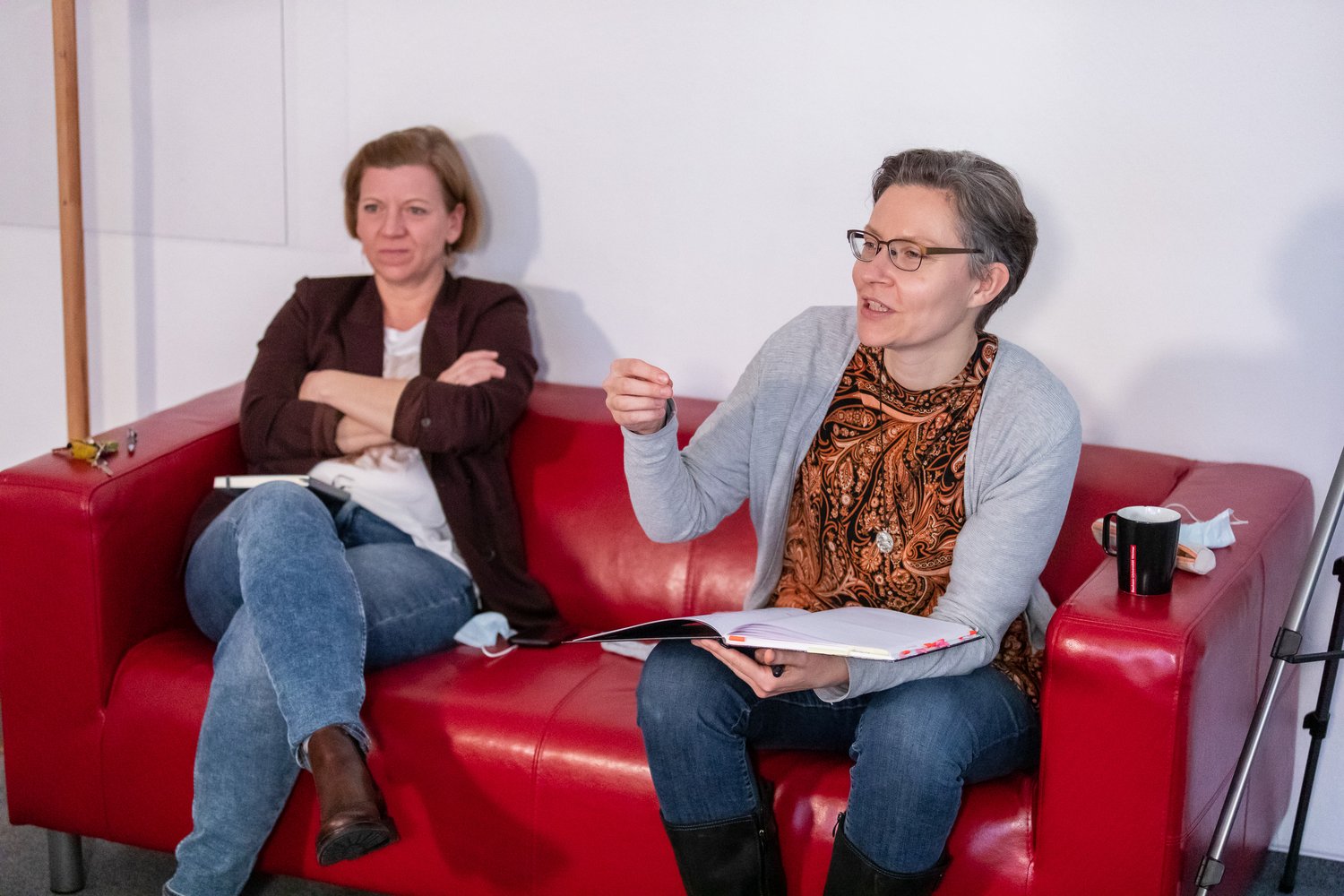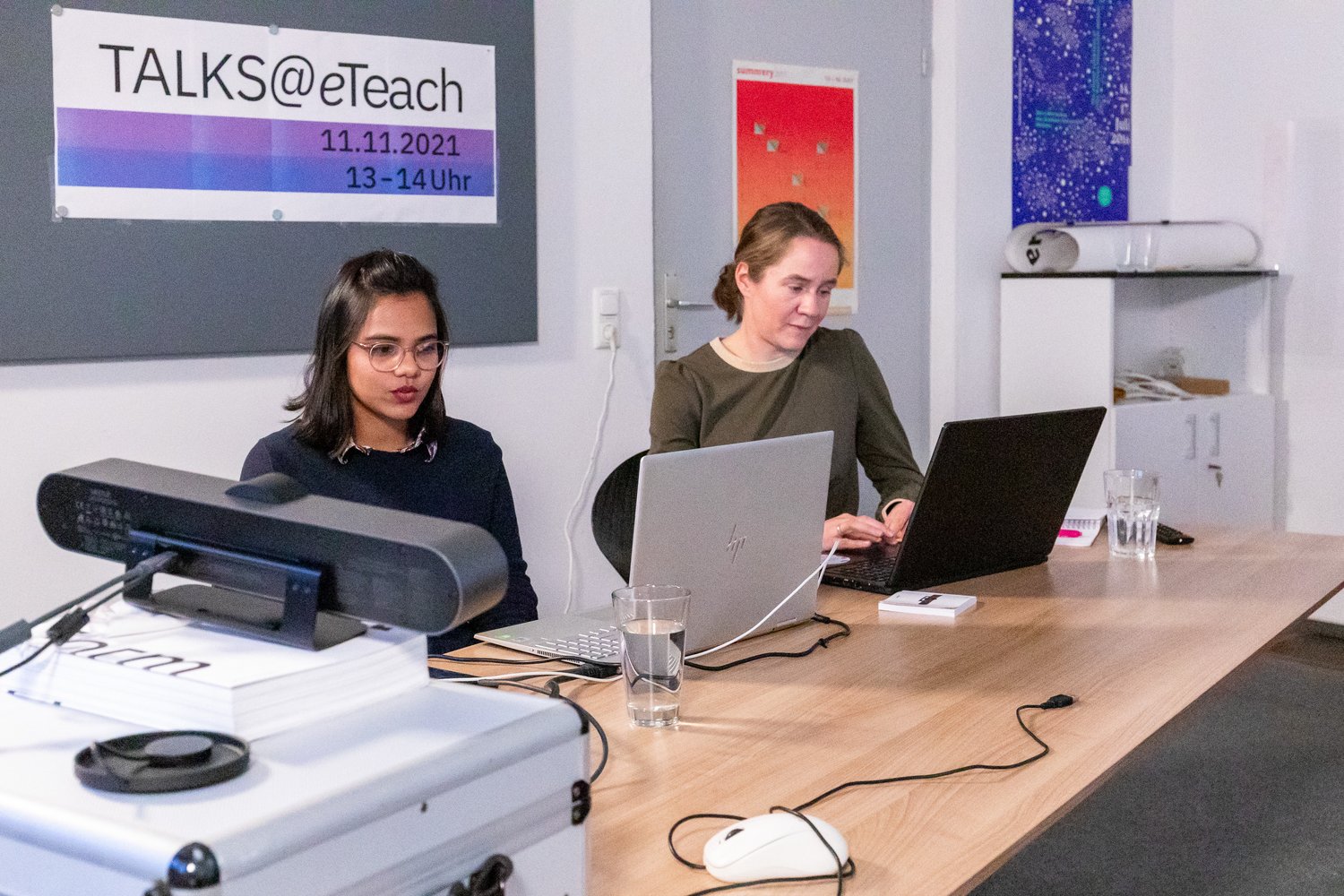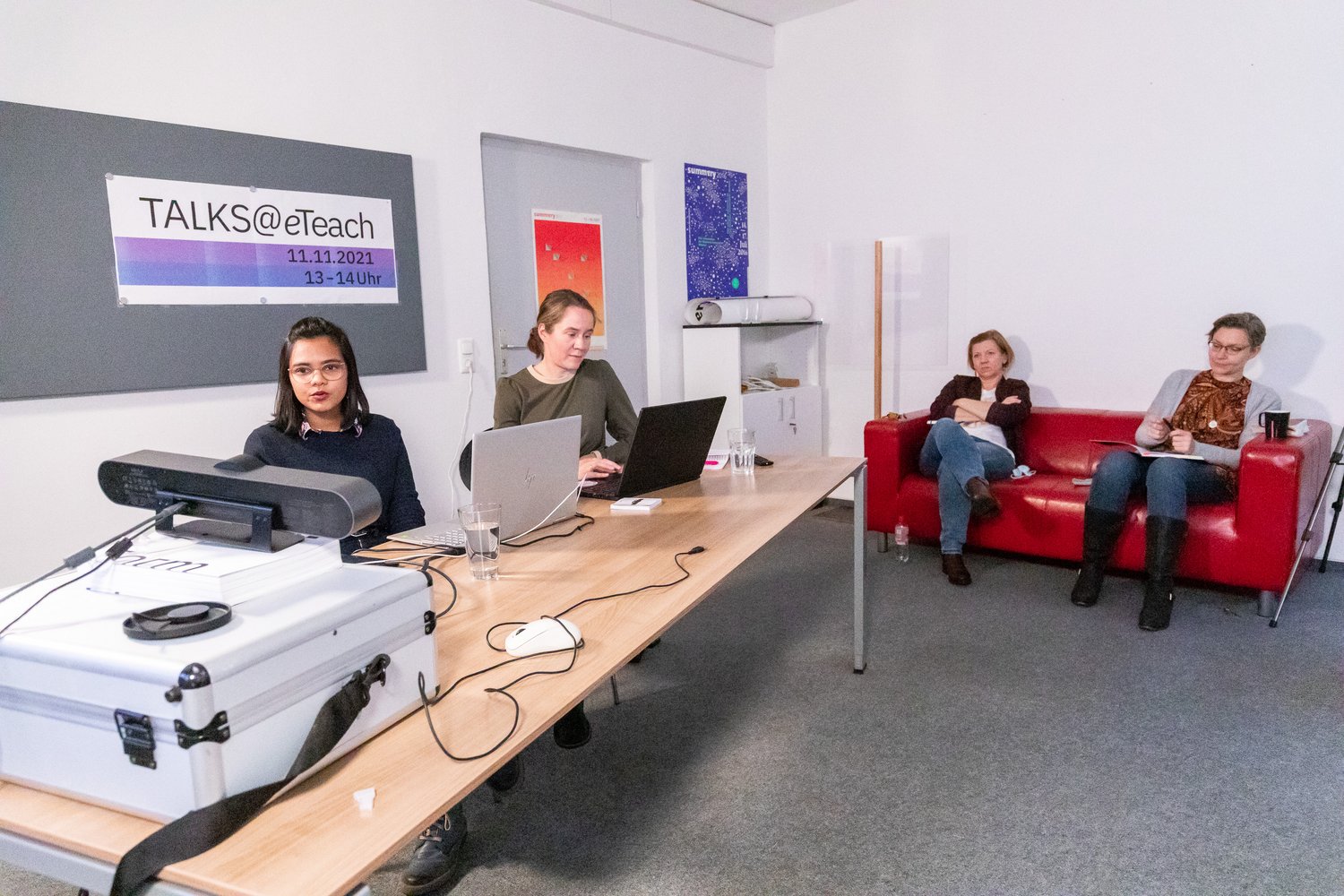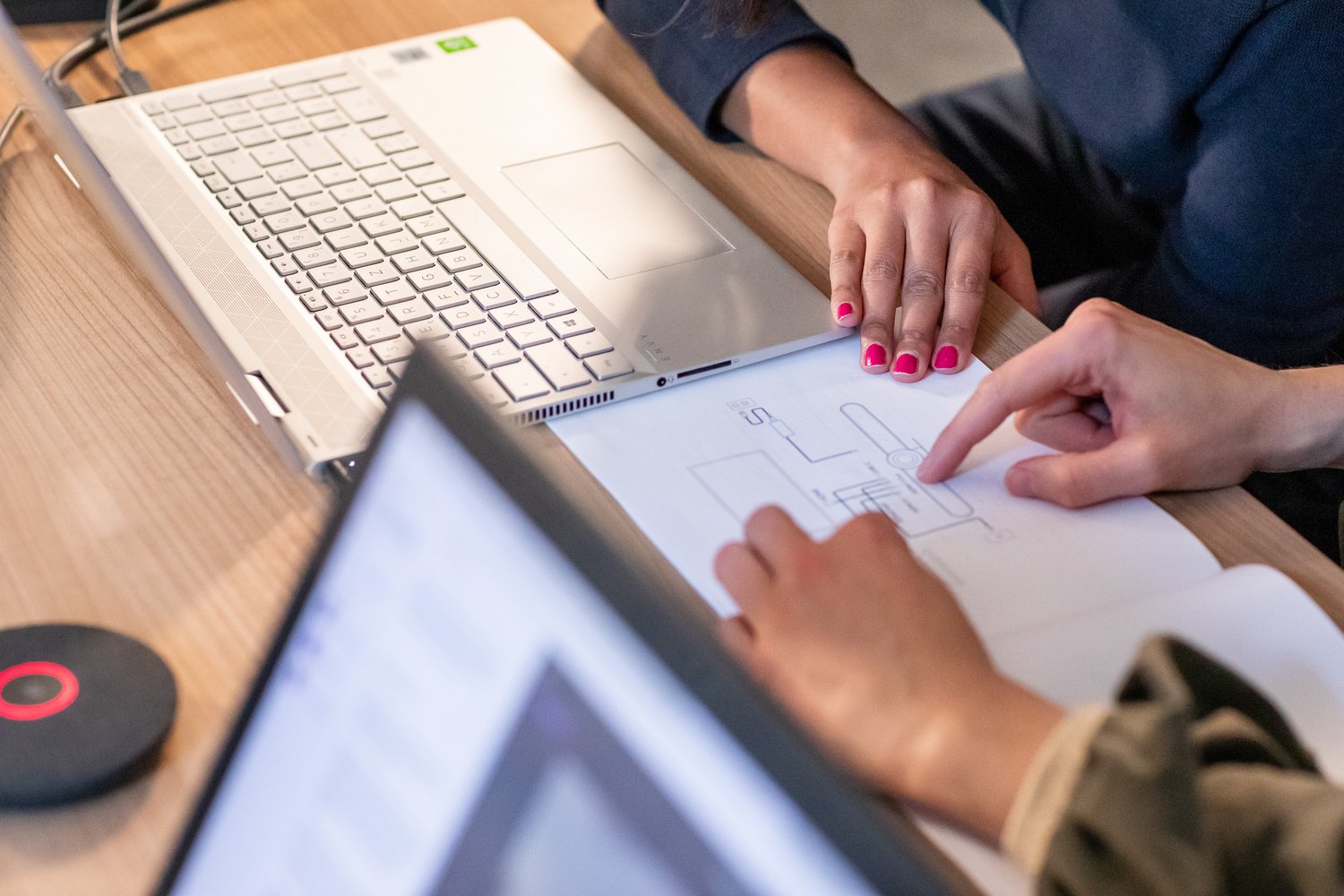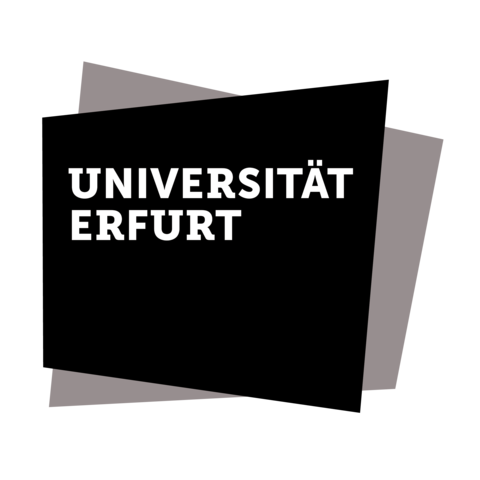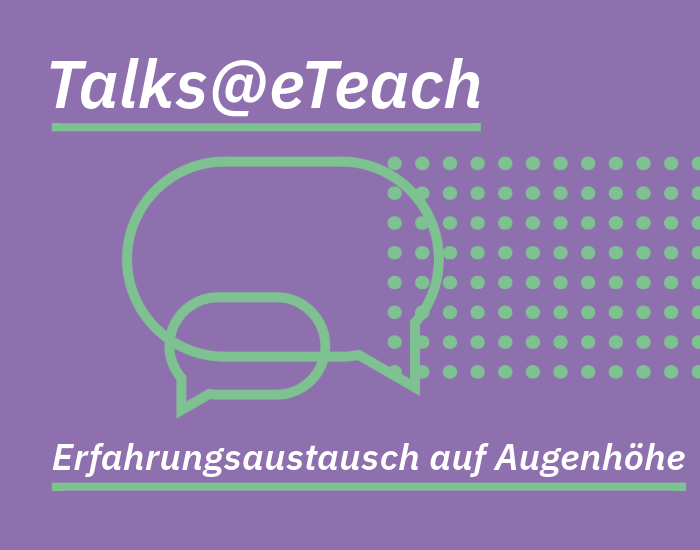
Talks@eTeach: New learning and research in the "room lab"
The next Talks@eTeach will take place on 22.05. from 13 - 14:00 on the topic "ChatEX - Differentiation in teacher training through a reflected use of AI chatbots"
>>> Further content on the event will follow shortly.
These are the past talks
Artificial intelligence is changing university teaching - but how can students be trained in a targeted and practical way?
The eTeach contact points Charlotte Steinke, Christina Otto (University of Jena), Dorothea Warneck (HfM Weimar) and Martina Gerhardt (Gera-Eisenach Cooperative State University) have developed two practical further education formats for students.
Invite AI in your classroom is a flexible, low-threshold course on generative AI & scientific work and can be integrated directly into courses. Teachers and students work together to test text-generative AI tools for academic work and discuss their potential applications.
Another basic AI offer is the genKI driver's licensedeveloped at the Friedrich Schiller University Jena. The Moodle course is an interactive self-study course for students at universities that teaches the basics of generative AI and supports its safe use in studies. The first version is available to all Thuringian universities on the Virtual Campus Thuringia.
The Virtual Campus Thuringia (VCT) is a central platform for digital learning and teaching in Thuringia. It connects universities, teachers and students and offers a wide range of digital resources and tools to help shape contemporary higher education.
The establishment of the Virtual Campus Thuringia (VCT) marks a significant milestone in the digital transformation of Thuringia's higher education landscape. The VCT is more than just a learning management system - it serves as a central initiative of the IT Center of the Thuringian Universities (HS-ITZ)to provide public, cooperative and cross-university online courses.
In this impulse lecture, you will learn all about the strategic goals, the organizational structure and the versatile functions of the VCT. It will show how teachers and students can efficiently integrate the system into their teaching and learning processes with practical insights into solving common challenges. New users in particular will receive valuable tips on how to use the system successfully.
The speakers Jan Montag, eTeach contact point at Erfurt University of Applied Sciences, and Marius Knodel, eTeach contact point at Nordhausen University of Applied Sciences, are in charge of the technical implementation of the Virtual Campus Thuringia.
[borlabs-cookie id="vimeo-content-blocker" type="content-blocker"]
[/borlabs-cookie]
This presentation explored the role of AI as a tool to support collaboration in education, focusing on different forms of collaborative learning, such as cooperative learning, team-based learning, group learning and peer learning. Participants engaged with practical examples using AI platforms already in use by the eTeach network. This should help them recognize how these tools improve collaboration
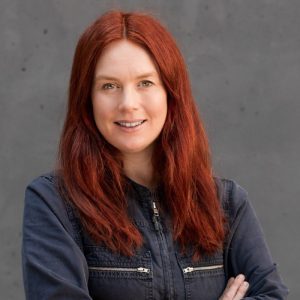
could reflect together on their experiences and discuss the potential impact of using this software in their own teaching and learning contexts.
Sophie Foster is an educational technologist at the Bauhaus-Universität Weimar. She supports the development of prototypes for virtual learning spaces and AI tools in the university environment. She is also currently coordinating the "Welcome to Thuringia" project, which offers a modern digital learning platform for international students interested in studying in the region.
[borlabs-cookie id="vimeo-content-blocker" type="content-blocker"]
[/borlabs-cookie]
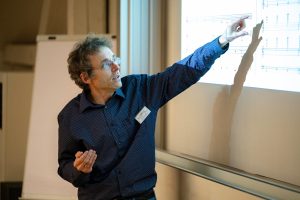
In teaching, AI-supported tools offer numerous opportunities to improve and individualize learning. Adaptive learning platforms can respond to the specific needs of students with personalized exercises and real-time feedback.
At the University of Music FRANZ LISZT Weimar, a so-called "music automaton" is currently being developed as part of a funding program, which is intended to sensitize students to listening to and composing different styles of music in a creative question-and-answer game. Such developments arouse curiosity about trying out how this composition platform works and raise questions about the possibilities and limits of AI tools in music lessons.
Conservatoires are faced with the task of preparing their students for a future in which AI will play a central role, without losing sight of human creativity and originality.
>> More information about the project here.
[borlabs-cookie id="vimeo-content-blocker" type="content-blocker"]
[/borlabs-cookie]
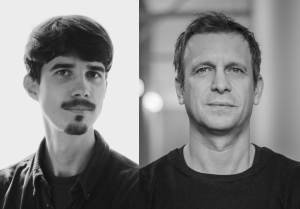 How could academic learning and working spaces be designed in the future? How can post-disciplinary, hybrid and experimental learning and research be promoted through spatial settings? To answer these questions, a "spatial laboratory" has been created over the last two years in the old reading room of the TU Berlin in cooperation with the UdK Berlin. The spatial concept is radically participatory and is based on the independent activity of the users - i.e. students, teachers and researchers from the arts, technology, natural sciences and humanities. In order to meet the very individual requirements of the learning or research situations, the spatial elements can be combined into a wide variety of constellations as required. This provides users with a flexible and customizable space that supports collaborative work and creative thinking. Because disciplinary diversity and multifunctionality place special demands on the participatory planning, implementation and evaluation of a learning and research space, an accompanying sociological evaluation was carried out, the results of which will also be presented.
How could academic learning and working spaces be designed in the future? How can post-disciplinary, hybrid and experimental learning and research be promoted through spatial settings? To answer these questions, a "spatial laboratory" has been created over the last two years in the old reading room of the TU Berlin in cooperation with the UdK Berlin. The spatial concept is radically participatory and is based on the independent activity of the users - i.e. students, teachers and researchers from the arts, technology, natural sciences and humanities. In order to meet the very individual requirements of the learning or research situations, the spatial elements can be combined into a wide variety of constellations as required. This provides users with a flexible and customizable space that supports collaborative work and creative thinking. Because disciplinary diversity and multifunctionality place special demands on the participatory planning, implementation and evaluation of a learning and research space, an accompanying sociological evaluation was carried out, the results of which will also be presented.Johannes Pointner studied architecture and urban studies in Munich, Tallinn and Berlin. In his architectural-spatial and artistic practice, he is particularly interested in the superimposition of different perspectives. Albert Lang is head of the inter-university, interdisciplinary, research-oriented Master's program Design & Computation at the TU Berlin and UdK. More about the project >>> here
[borlabs-cookie id="vimeo-content-blocker" type="content-blocker"][/borlabs-cookie]
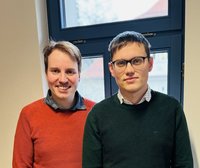
ChatGPT and similar AI applications are about to disrupt writing at schools and universities. The applications can produce texts in a matter of seconds that are barely distinguishable from human-generated texts on the surface and are likely to exceed the writing skills of many writers. This raises the question of how and which writing skills need to be taught more in the future. In order to address this need, since the beginning of the year we have been designing an advanced training course for student teachers of all subjects as part of the "Writing with AI in the teaching profession" project. The students are addressed in two ways: On the one hand, they should acquire skills to be able to competently manage the writing tasks that arise during their studies using AI. On the other hand, they should receive suggestions for teaching writing skills in times of AI as future teachers. During our talk, we will provide initial insights into the content and structure of our training concept. Building on this, we want to enter into an interdisciplinary exchange with the audience about their own teaching experiences with the use of AI in relation to writing. >>> more about the project
Dr. des. Gerrit Helm is a postdoc at the Chair of German Didactics at the Friedrich Schiller University Jena. It deals with the diagnosis and promotion of reading and writing in digital contexts. One focus is on the question of what implications the emergence of artificial intelligence has for reading and writing skills and their teaching.
Dr. des. Florian Hesse is a postdoc at the Chair of German Didactics at the Friedrich Schiller University Jena. There, he is primarily concerned with the question of what characterizes good German lessons and how prospective teachers can be prepared to deal competently with the demands of their profession. Since 2022, the question of the extent to which AI tools can support prospective and experienced teachers in the planning and implementation of German lessons has also played a role in this context.
[borlabs-cookie id="vimeo-content-blocker" type="content-blocker"] [/borlabs-cookie]

With the prompting station, we provide a practical and creative tool in the eTeach network to deal with the topic of artificial intelligence. Prompts are clear instructions in text form that support AI systems in generating answers or creating content. With the applications of the prompting station, teachers can try out different tools, develop ideas and make them usable for their courses. The station can be used in free settings and allows non-specific research to be tried out and spontaneous creative ideas to be realized at a low-threshold level. It can also be used in a targeted manner in workshop scenarios. For example, scenarios such as "AI-based examination design" or "AI-supported teaching content" can be implemented. The activities that you can implement with the initial selection of tools in the prompting station include Translating with the AI Writing Assistant DeepL, generating images with Leonardo AI, creating presentations with Tome and Gamma, producing videos with avatars with Descript and researching with Perplexity AI Pro and Keenious. In the talk, the functionality and applications of the prompting station will be presented, individual scenarios for use will be presented and questions and suggestions from participants will be discussed. The slides for the input can be >>> here can be downloaded.
[borlabs-cookie id="vimeo-content-blocker" type="content-blocker"] ;">
[/borlabs-cookie]
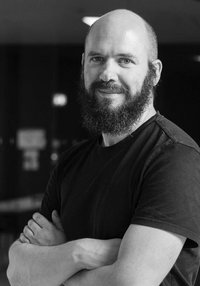 "Consumers are divided into income groups, into red, green and blue fields, as statistical material on the map of the research centers, which can no longer be distinguished from propaganda."
"Consumers are divided into income groups, into red, green and blue fields, as statistical material on the map of the research centers, which can no longer be distinguished from propaganda."Dr. phil. Alexander König teaches and researches at the Bauhaus University Weimar. He received his doctorate from the University of Fine Arts in Vienna (Department of Cultural Theory, Prof. Diedrich Diederichsen). He currently researches and teaches in the field of machine learning / artificial intelligence, with a focus on critical approaches. In 2015, he first taught a course on AI at the institute "KIT" at NTNU, Norway, followed by lectures at the National University of Singapore (NUS) in 2017 as Artist in Residence. In the following years, he developed the practical project "AiNim" as part of the Samsung-sponsored Art&Tec Lab at the Filmakademie Ludwigsburg. Presented in 2017, the project explores the possibilities of using artificial intelligence technologies in art and media productions. A further development of this idea was presented at the "Philips Trend Event" in Amsterdam in 2019. With the help of Martinus Suijkerbuijk, a prototype was developed in 2019 that can help designers design products in the future. In addition to a project module in Weimar, König developed several projects with artists during the 2020-2022 pandemic. In David Halbrock's Nachtall project, so-called "edge devices" were used to classify birdsong with the help of AI and resynthesize it after four weeks using AI methods following statistical evaluations. In Maurits Böttger's Time Sales project in 2022, a predecessor of ChatGPT (GPT-2) was used; this network was retrained with selected texts to give it a certain (existentialist) character. In another project in 2022, König used AI to generate data for a composition commission from Prof. Max Marcoll. Various methods were tested and trained with jazz compositions.
ChatGPT is on everyone's lips and we have now gained initial ideas and insights into how the writing of term papers, publications or event concepts is changing. This is accompanied by an exponential growth in computing power and data availability on a scale that we can barely keep track of. How will this develop over the next few years, what challenges lie ahead and what do these processes mean for education and teaching at universities? The input looks at the current status and history of AI, ventures an outlook on the future and the effects of AI on the world of work and life and derives implications for education.
Johannes Scholl is Project Manager AI at the Center for Applied AI and Transfer (AN[ki]T), which Interdisciplinary Transfer Center for Artificial Intelligence at Ansbach University of Applied Sciences. AN[ki]T stands for ONcome - [ki] experience - aTalso. The interdisciplinary research and transfer center for applied AI at Ansbach University of Applied Sciences acts as a point of contact for the region and connects education, companies and citizens. In addition to several robots, the team includes the management, professors, laboratory engineers and student assistants. The players see themselves as "doers, technicians, planners, creative minds, we are colorful, sustainable and open to new ideas. But above all, we enjoy what we do every day."
The publication of the chatbot ChatGPT, which is based on a large language model, in November 2022 has attracted a great deal of attention to the topic of artificial intelligence (AI), and not just in the public eye. From the perspective of higher education, ChatGPT poses a challenge for various learning and examination formats, as it significantly reduces the effectiveness of their learning and examination functions. In particular, ChatGPT is applicable to formats for which learners need to generate texts, such as theses or assignments. Accordingly, the question arises as to what extent the writing of theses is still a valid learning and assessment format.
Nicolas Schwenke is a graduate of the Bauhaus University Weimar and reports on the experiences of his bachelor thesis, which he was explicitly asked to write using ChatGPT. In order to understand the effects of ChatGPT, an autoethnographic approach was chosen methodically. On the one hand, all considerations regarding the possible use of ChatGPT were documented, and on the other hand, all ChatGPT chats were logged. Both the logs and the chat histories were analyzed and are compared with the recommendations for students on the use of ChatGPT proposed by Gimpel et al. (2023). It should be revealed at this point that writing a meaningful thesis still requires the full commitment of the learner. Consequently, writing a thesis is still a valid learning and examination format. However, with further versions of ChatGPT, an increase in performance is to be expected, so a reevaluation is necessary from time to time. The slides for the presentation can be >>> downloaded here become.
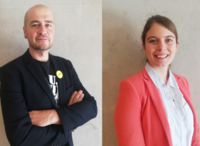 As part of the BMBF project QUALITEACH, the competence network for digital subject-related teacher training (KdfL) supports teachers at the University of Erfurt in the design and implementation of digital teaching in virtual space. A particular focus here is on the needs of teacher training. Competence models and quality criteria for successful, digitally supported teaching and learning are developed using evaluation procedures. In the talk, we will briefly present our H5P- and moodle-based self-study courses and show how these courses can be adapted and reused, adapted and used. We will explain the theoretical foundations of the design and present recommendations for the design of university self-study courses as well as methods and results of the evaluation of the courses. Thorsten Ziegler and Julia Sgoligk, both research assistants in the project, look forward to exchanging ideas with you. Further information on the project is >>> to be found here The slides for the presentation can be >>> downloaded here become.
As part of the BMBF project QUALITEACH, the competence network for digital subject-related teacher training (KdfL) supports teachers at the University of Erfurt in the design and implementation of digital teaching in virtual space. A particular focus here is on the needs of teacher training. Competence models and quality criteria for successful, digitally supported teaching and learning are developed using evaluation procedures. In the talk, we will briefly present our H5P- and moodle-based self-study courses and show how these courses can be adapted and reused, adapted and used. We will explain the theoretical foundations of the design and present recommendations for the design of university self-study courses as well as methods and results of the evaluation of the courses. Thorsten Ziegler and Julia Sgoligk, both research assistants in the project, look forward to exchanging ideas with you. Further information on the project is >>> to be found here The slides for the presentation can be >>> downloaded here become.
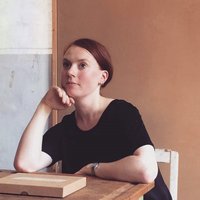 We conducted collaborative research to enhance online teaching and learning by exploring virtual gathering platforms such as Topia and WorkAdventure. These platforms, inspired by the Metaverse, offer engaging ways to communicate through immersive worlds and customizable avatars. We created templates based on the Hybrides.Lernatelier at Amalienstrasse 13, Bauhaus-Universität Weimar and invited university teachers to develop scenarios for their students. In this talk, we'll share the results, discuss usability and adaptability, and assess the need for institutional support. We would also like to invite teachers, both experienced and new, to these platforms and test our improved templates for Topia and WorkAdventure with students, ready to start in the upcoming winter semester.
We conducted collaborative research to enhance online teaching and learning by exploring virtual gathering platforms such as Topia and WorkAdventure. These platforms, inspired by the Metaverse, offer engaging ways to communicate through immersive worlds and customizable avatars. We created templates based on the Hybrides.Lernatelier at Amalienstrasse 13, Bauhaus-Universität Weimar and invited university teachers to develop scenarios for their students. In this talk, we'll share the results, discuss usability and adaptability, and assess the need for institutional support. We would also like to invite teachers, both experienced and new, to these platforms and test our improved templates for Topia and WorkAdventure with students, ready to start in the upcoming winter semester.
Your experience and feedback will help understand the possibilities of these virtual gathering platforms for academic settings. Join us on this innovative journey to reshape education and together, let's revolutionize the way we teach and learn!
We have explored how virtual platforms such as Topia and WorkAdventure can enhance teaching and learning. These platforms, inspired by the metaverse, provide opportunities for communication through immersive worlds and customizable avatars. We have created customizable templates based on the Hybrides.Lernatelier from Amalienstrasse 13, Bauhaus-Universität Weimar and invited university teachers to develop and test scenarios for their students. In this talk we will present the results so far, discuss the usability and customizability of the platforms and explain how teachers can be supported in using Topia and WorkAdventure. We cordially invite all teachers to learn more about virtual platforms such as Topia and WorkAdventure and to test our improved templates for Topia and WorkAdventure with students.
Your experiences and feedback will help us to test the possibilities of these virtual platforms in the university context. Join us on this journey and explore the possibilities of these platforms to reshape teaching and learning!
Main speakerSophie Foster
Guest TeachersElodie Vittu, Martina Jakobi, Larissa Barth
Main Presentation Language: English
Download the presentation >>> here
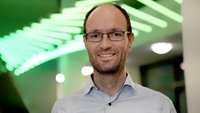
"Look at the solution, little one!" Personalizable tasks & anonymous peer review in the engineering sciences with Dr. Mathias Magdowski from Otto von Guericke University Magdeburg.
I developed the concept of personalized tasks with anonymous peer review to discourage our students from bulimia learning and to motivate them to deal with the basics of electrical engineering during the semester (and not just shortly before the exam). All students are sent an individual task by e-mail, can solve it using any method of their choice and submit their handwritten solution for correction via a learning management system. The students are welcome to support each other in solving the task, but due to the individualization of the tasks, they cannot simply plagiarize from each other. In order to reduce the correction effort for me as the teacher and to enable prompt feedback, the students then assess each other using a sample solution that has also been personalized.
The entire process is automated and is therefore easily scalable. In contrast to simple multiple-choice or numerical value and unit tasks, the calculation method and approach as well as sketches, circuit diagrams and diagrams can also be evaluated well here. Students also gain a deeper understanding of the subject area of the tasks by thinking about other people's solutions as part of the peer review.
You can find more information >>> here.
You can watch a recording of the presentation >>> click here.
 ChatGPT & Co. in university teaching with Prof. Christian Spannagel from the Heidelberg University of Education.
ChatGPT & Co. in university teaching with Prof. Christian Spannagel from the Heidelberg University of Education.
At the end of 2022, the release of the ChatGPT AI system shook up teaching staff at schools and universities: The language model is able to provide answers to questions in natural language, for example when working on homework or solving exams.
This powerful tool is just the beginning of a development that is "rolling" towards the education system. Calls for a ban on such systems quickly became loud. >The lecture dealt with the constructive use of ChatGPT and similar tools in teaching beyond bans. Didactic approaches to the use of AI systems were presented. Opportunities and challenges for both teachers and students as well as implications for examinations were then discussed.
The slides for the presentation can be >>> can be downloaded here.
Additional links and tips from the discussion group are >>> can be found here.
You can find more information >>> here

From 360° room to low-threshold escape room with Dr. Heinrich Söbke from the Bauhaus University Weimar.
Current 360° technology, such as cameras and authoring environments, enable teachers to develop their own subject-specific 360° rooms or to use freely available subject-specific 360° rooms. The spatial characteristics of such 360° rooms lend themselves to a combination with the popular game metaphor of the escape room. Using the example of a 360°-based waterworks in combination with a web-based form, the low-threshold implementation of a digital escape room is presented, which is now regularly used in university teaching. In particular, the potentials and challenges of transferring it to other subject-specific objects will be discussed.
Heinrich Söbke works in the field of applied engineering didactics and educational technology at the Faculty of Civil Engineering at Bauhaus-Universität Weimar. His research focuses on serious games, gamification and mixed reality. Through continuous dialog with these disciplines, he is constantly involved in related topics such as simulations, integrated data models and data exchange formats.
The slides for the input are >>> can be found here.
You can find more information >>> here.
 Cooperatively developing media-enriched teaching, learning and examination formats and receiving funding from the eTeach network - how can this work well? What is the path from the application idea to approval and project results? What are learnings? And in general - what are exciting and eligible topics? In the Impulse project by Prof. Döbel digitization is used to determine the learning progress of students. To this end, tasks are generated to accompany lectures and the students' answers are evaluated as automatically as possible.
Cooperatively developing media-enriched teaching, learning and examination formats and receiving funding from the eTeach network - how can this work well? What is the path from the application idea to approval and project results? What are learnings? And in general - what are exciting and eligible topics? In the Impulse project by Prof. Döbel digitization is used to determine the learning progress of students. To this end, tasks are generated to accompany lectures and the students' answers are evaluated as automatically as possible.
In the talk, the plans and implementation of this project were presented and discussed with the participants. It was also about the format of the Cooperative impulse projects and the associated opportunities and framework conditions.
The presentation slides for the talk are >>> can be found here.
 With the words "To spoil it right away: I'm not going to talk about game-based learning." Amir Madany Mamlouk, private lecturer at the Institute of Neuro- and Bioinformatics at the University of Lübeck, began his input at Talks@eTeach. His statement was followed by an exciting input in which he enthusiastically reported on the further development of his lecture "Introduction to Bioinformatics" into a positively reinforcing learning experience. Instead of insisting on the classic summative assessment, he adapted the course of the lecture so that students can collect experience points over the course of the lecture period, from which the final grade is then derived and thus enables them to pass even without an exam.
With the words "To spoil it right away: I'm not going to talk about game-based learning." Amir Madany Mamlouk, private lecturer at the Institute of Neuro- and Bioinformatics at the University of Lübeck, began his input at Talks@eTeach. His statement was followed by an exciting input in which he enthusiastically reported on the further development of his lecture "Introduction to Bioinformatics" into a positively reinforcing learning experience. Instead of insisting on the classic summative assessment, he adapted the course of the lecture so that students can collect experience points over the course of the lecture period, from which the final grade is then derived and thus enables them to pass even without an exam.
The exercises accompanying the lecture can be completed in a Moodle room. The students found this new way of learning particularly motivating because they were able to achieve their first successes quickly by making their own decisions. Clear rules, a transparent reward system and a continuously increasing level of difficulty, but above all the ability to plan the success of their studies, inspired many of the 600 or so students who have taken part in the transformed module over the last five years.
The slides for the input can be >>> can be downloaded here.
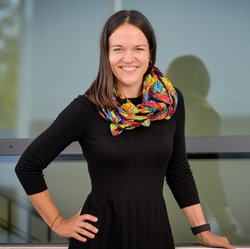 With the title "There is no right way to rest in the wrong one", Amrei Bahr opened with the thesis that resting is often only seen as individual personal responsibility but is actually misused for the purpose of self-optimization in our work context.
With the title "There is no right way to rest in the wrong one", Amrei Bahr opened with the thesis that resting is often only seen as individual personal responsibility but is actually misused for the purpose of self-optimization in our work context.
Institutional and structural problems and grievances in the academic world of work require an excessive adaptation of the individual to performance requirements, expectations and pressure. Unfortunately, as a junior professor and book author, she herself has too little time to rest. The exchange on this topic, the awareness of this imbalance between individual and structural responsibility are important impulses on the way (back) to resting for the sake of resting.
The input slides for the exchange on July 7 can be >>> can be downloaded here.
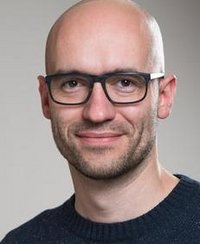 Sensitizing students to take the perspective of the users of spaces is an important learning objective at Represented by Prof. Dr. Sven Scheider from the Bauhaus University in Weimar.
Sensitizing students to take the perspective of the users of spaces is an important learning objective at Represented by Prof. Dr. Sven Scheider from the Bauhaus University in Weimar.
With the OpenVREVAL project (funded by the TMWWDG), he has developed a virtual reality-based tool for the user-centered evaluation of building designs and uses it in his teaching. His students use this tool to investigate how users can move and orient themselves in their building designs, how the spaces affect them and whether they are suitable for certain uses.
In the Talks@eTeach on May 12, entitled Virtual Reality-based User Studies in Architecture Education, Deputy Professor Dr. Sven Scheider presented the teaching concept and his experiences with the use of VR-based user studies in teaching.
The presentation slides for the input are available >>> available for download here.
 Flipped teaching is the German term for the "inverted classroom" teaching method. This method is used, didactically analyzed and discussed in many university teaching subjects. Our Talks event on March 10, 2022 dealt with this development: Professor Christian Spannagel is Professor of Mathematics and Mathematics Didactics at the Heidelberg University of Education. He also holds the position of Vice-Rector for Research, Transfer and Digitization. His areas of work include mathematics and computer science didactics as well as computer-assisted learning and teaching.
Flipped teaching is the German term for the "inverted classroom" teaching method. This method is used, didactically analyzed and discussed in many university teaching subjects. Our Talks event on March 10, 2022 dealt with this development: Professor Christian Spannagel is Professor of Mathematics and Mathematics Didactics at the Heidelberg University of Education. He also holds the position of Vice-Rector for Research, Transfer and Digitization. His areas of work include mathematics and computer science didactics as well as computer-assisted learning and teaching.
He has been awarded numerous prizes for his innovative teaching concepts. He has always been committed to transparent and high-profile research and teaching, which is why many of his lectures are published on YouTube, for example. In his talk, he shared his wealth of experience around and with the "inverted classroom" method.
Summary of the impulse:
The impulse began with a surprising statement: "Inverted/flipped has nothing to do with online teaching or video learning! It also works analog" and is one of many methods. The special thing about the inverted classroom is that it focuses on presence as a valuable, shared learning time for social interaction. In general, the method is structured in such a way that students prepare themselves with various materials (explanatory videos, texts, tasks). Once they are in the lecture hall at the university, questions are discussed and problems addressed. Figuratively speaking, the lecturer changes role from the sole entertaining musician to the conductor of the student "orchestra".
How is an inverted classroom planned?
- "From the back to the front": Planned lessons, basic structure, consider alternatives. Write down. Task, what then... Planning. Time estimation.
- Become a "Design Researcher": research your own teaching!
- Only IC if you have sufficient technical knowledge. Otherwise, classic formats are also a possibility.
Important tips on how to run an inverted classroom concept:
- Tasks every week, point out commitment
- Remind you to prepare! e.g. send reminder e-mails
- Do not repeat or summarize in the next session, because then nobody prepares anymore - stay consistent!
- Activate students and tease out their motivation/their topics and interests and start there
How can students be motivated?
- If they perceive themselves as autonomous - Therefore more and more texts to choose from! Freedom of choice is important (not everywhere, real choice!) From different perspectives.
- Extrinsic: Social integration is important: you are not alone... I can't keep up, group, mutual support.
- Intrinsic: Experience of competence, achievable challenge: Not too easy and not too difficult. Heterogeneous: Different levels of difficulty. Natural differentiation = tasks that are as open and complex as possible
- What do you need it for? Interest in the content of the subject, quality of instruction, variety of activities.
- Bouquet of methods, not a deterministic but a stochastic system: the more possibilities, the higher the probability of good learning
- Goal and prerequisite: Self-determined learning. Can be practiced early on with the method. Must therefore also be demanded
Methods used and communication with students
- Explain the method again and again. Consultation hours, forums, eLearning, support for those who can't cope.
- A lot in the lecture hall via ThinkPairShare and mumble rounds. Accompanying, collecting ideas. To the blackboard. New question. Frequent changes between methods
- Therefore: Establish rules for communication/ coming to rest. E.g. sound stick or other signal. Rituals frame valuable presence time (saves nerves and time...)
- "Active plenary": Student in front, one moderates. Last row. Possible with up to 250 students. Feedback at the beginning after 4 to 5 sessions. Engage in conversation with students: Explain why you are doing it this way. Better than a questionnaire.
- Remain flexible in your choice of methods and time management, adjust if necessary. Change the clock.
Disadvantages of the method
- The gap is widening: Bad students don't keep up, the good ones get better.
- Complex method: in preparation and implementation as well as adaptation to students
- Differentiation as a challenge. Heterogeneous students: Socio-economic background, learning strategies
Click to continue: >>>Lecture: Mathematics lecture turned on its head and:
>> Flipped Classroom: It's nonsense to tell the same things again.n
Presentation slides of the Talks@eTeach impulse will be sent on request: Please contact iren.schulz@uni-wemar.de
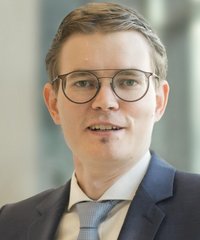 Professors who are newly appointed to a college or university face a variety of new challenges. These include current and (it can be assumed) future skills and experience in the design and delivery of online and hybrid courses.
Professors who are newly appointed to a college or university face a variety of new challenges. These include current and (it can be assumed) future skills and experience in the design and delivery of online and hybrid courses.
Against this backdrop, our January talk focused on the interplay between new recruits and digitalization. Professor Michael Garkisch from the University of Applied Sciences in Erfurt provided the impetus. He has been a professor for a year and started teaching in the middle of the coronavirus pandemic. He talked about what it meant for him to be appointed during the pandemic and to design and deliver his own courses digitally from the outset:
- Initial situation: the level of teaching commitment(s) should not be underestimated
- Structure of the moodle course: Introduction, 1st self-study phase, intermediate reflection, 2nd self-study phase, revision, conclusion, exam preparation
- Structure of self-study unit: learning objectives, knowledge map, content - partly as vodcast with subtitles, "call to action": quizzes, padlet, crossword puzzles, forum questions
- Procedure: unlock lessons gradually
- Processing period: clearly define
- Learning: meeting students at eye level and enabling informal learning
- Exams: offer during the semester via Moodle or via badges, if possible
- Teaching and research: think about the possibility of publication, Thuringian LLVO leaves room for "experiments" or through projects
- Workload: development, support and follow-up significantly higher, so concrete planning is important
- Asynchronous teaching helps to be less of a teacher and more of a learning coach
- sees a future occupational field of the "Learning Designer"
 The talk about the Topic Hybrid courses on November 11, 2021 actually also took place in a hybrid setting. After a long period of online formats as part of courses at our universities, the need for hybrid formats is increasing.
The talk about the Topic Hybrid courses on November 11, 2021 actually also took place in a hybrid setting. After a long period of online formats as part of courses at our universities, the need for hybrid formats is increasing.
The questions revolved around technical equipment, didactic-methodical preparation and the associated advantages and disadvantages for teachers and learners. These and other questions were addressed and discussed in a practical way and a hybrid room concept was installed and presented. The initiators were:
Lana IwanjekJunior Professor at the Chair of Didactics of Physics, TU Dresden. Impulse: Interactive formats in hybrid teaching-learning settings.
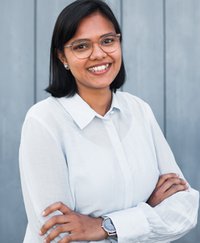
Zaryab Chaudhry: "Tools & Interfaces" specialist unit in the eTeach network Thuringia. Impulse: Streaming 101: A look at the hybrid setup for lectures
The next talk took place in September on the topic of "Formative examination formats".
Uwe Cämmerer-Seibel: Fachstelle Formate & Methoden im eTeach-Netzwerk Thüringen with the impulse "Kapiert? - Use of formative eExams from a media didactic perspective"
- Basic question: How effective are formative tests/assessments in digitalized teaching/learning formats and how can they be used in practice?
- Answer: Self-checking while learning (compare, for example, learning vocabulary with cards or apps) is a well-proven and effective learning strategy. It can be used in a variety of ways, especially in digitalized formats, and has many advantages:
- The learning status as well as misunderstandings and typical errors can be easily recorded
- The tests can be used flexibly, allow for detailed feedback and, if used correctly, increase student motivation.
- The disadvantages are as follows: Still low distribution among students and increased effort on the part of teachers.
- Two online Bachelor modules are presented as examples. A combination of online lecture, online seminar and an LMS in moodle.
- It is important to agree on the method itself as a learning objective in the first seminar, to announce the tests early on and to interlink them with the online teaching units.
- The division, sequence and difficulty of the tests should be planned and implemented according to Bloom's extended learning taxonomy.
- Various audience response formats and group work are presented as examples of formats for BigBlutButton.
- For the LMS in moodle, practical examples of implementation in different test formats are given.
Dr. Petra Lepetit: eTeach contact point at the Ernst Abbe University of Applied Sciences Jena with the impulse "Is this relevant for exams?" - Aligning teaching and examining through constructive alignment"
- Basic question: How can the goals and expectations of teachers and students be reconciled?
- Answer: Through constructive alignment - the examination design should match the learning outcomes and the teaching-learning activities should be aligned with them:
- Both the learning outcomes and the expected examination results should be communicated as transparently as possible.
- It also makes sense to categorize them according to a level model
- In this process, the learning outcomes are first formulated according to the SMART method in the what-with-what-to structure.
- The content is then defined on the basis of these learning objectives.
- Finally, both the examination and learning methods are selected to suit the respective learning level.
- As an example, a basic Python course from the computer science course is presented, including a test for the students' self-assessment.
Guided by the following questions, the first Talks@eTeach exchange on alternative examination formats took place on July 22: What formats for online exams have you tried and what was purposeful and what was not? How should questions in open book exams be formulated so that students' specialist knowledge and also their skills in applying and analyzing what they have learned can be tested? In order to give everyone who was unable to attend the talk the opportunity to read the contributions of the speakers, you will find a collection of the practical examples presented here:
Prof. Dr. Ulrike Garscha, University of Greifswald: "Digital examinations - curse or opportunity? Experiences in the subject of pharmacy"
- Basic question: Do the advantages and opportunities of digital audits exist in practice?
- Answer: Yes! Fundamentally, digital exams offer a great opportunity to change teaching in the long term and to test applied knowledge! But:
- Technology: often heterogeneous and difficult, must not become a disadvantage for students, therefore: SOPs and mock exams
- Proof of performance: not always compatible with state examination, because facts are required, high error rate Structure and implementation: variable random selection from question pool (MC and variations) with high question density and time pressure, Hiwi telephone support, video-monitored, with SEB
- Correction: Automatic in Moodle, sometimes still difficult with e.g. Greek letters, formulas, 3D structures, chemical structures, cascades
- Teachers' conclusion: Very high effort in preparation and evaluation, >50 monitoring not possible, legal questions open, use of question pool good in the long term, also reports/statistics, especially for entrance and self-study exams, good cooperation with students, university teaching concepts must be rethought ("What and how do we want to teach in the future"), this change process should be undertaken together with the students
- Students' conclusion: Mock exam essential, some technical problems, high time pressure, exam content much more difficult
- >>> Download the presentation slides as PDF
Dr. Sascha Schneider, Chemnitz University of Technology: "Can I test application knowledge online? Practical experience with a digital open-book exam as part of a statistics seminar"
- Prerequisites: Master's course, 42 students, heterogeneous in terms of prior knowledge
- Objectives: To be able to apply statistical knowledge directly in common software. 100% turn: analog -> digital and theory->practice
- Course structure: Review, analysis forms with exercises (with software), free practice, mock exam, open-book exam Preparation for exam: personalization of data sets, creation of tasks and info sheet, determination of exam time, password assignment, setup of exam room (TUCExam) Structure and implementation: take-home exam, speed test in advance, 30′ preparation time, 90′ processing, 6 tasks from easy to difficult, with software, high application part, Hiwi telephone support
- Teachers' conclusion: Very high effort in preparation and evaluation, hardly any possibility of cheating, but not legally anchored (free attempt), variety of query formats good
- Conclusion students: Mock exam essential, no technical problems, all completed within the time frame, good average, fair, high application part
- >>> Download the presentation slides as PDF
Date
- 30.05.2024
- Expired!
Time
- 11:00 - 12:00
Local Time
- Timezone: America/New_York
- Date: 30.05.2024
- Time: 7:00 - 8:00
Location
Online - BBB
- Online - BBB
Organizer
-
eTeach Network Thuringia
